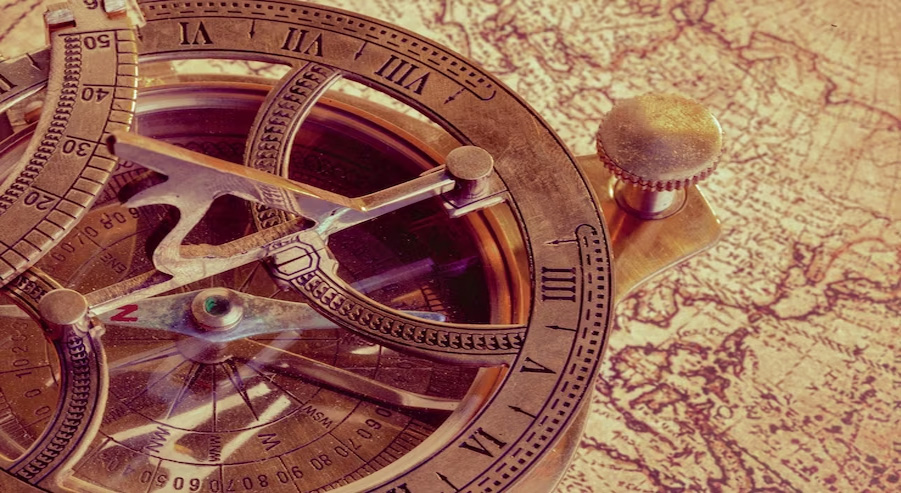
Ancient Sailors Navigation: Techniques, Tools, and Challenges
Navigation has been a crucial aspect of human history since the beginning of seafaring. Ancient sailors traversed the oceans, explored new lands, and established trade routes, all with the help of their navigation techniques and tools. In this article, we will explore the navigation techniques of ancient sailors, the tools they used, the challenges they faced, and their trade routes.
Introduction to Navigation Techniques of Ancient Sailors
Ancient sailors navigated the seas using a combination of techniques and tools, including celestial navigation, the compass, quadrant, astrolabe, and more. They relied heavily on their knowledge of the stars, the sun, and the moon to guide them across the oceans.
Tools Used for Navigation
Celestial Navigation Celestial navigation was a vital tool for ancient sailors, and it involved using the positions of celestial bodies to determine their position on the sea. This technique was especially useful during cloudy weather, where sailors could not rely on the sun or the stars to navigate. One of the essential tools used for celestial navigation was the astrolabe. The astrolabe, invented by the ancient Greeks in the 2nd century BC, was a handheld device used to measure the altitude of celestial bodies, allowing sailors to determine their position.
Compass
The compass was another important tool used for navigation, and it provided a way to determine the direction of travel. The first compasses were made using lodestones, a naturally occurring magnetic mineral, and they were primarily used for land navigation. However, sailors soon adapted the compass for use at sea, and it became an indispensable tool for navigating the oceans.
Quadrant
The quadrant was another navigational tool used by ancient sailors, and it was primarily used for measuring the altitude of the sun or stars. It was a quarter-circle device that sailors used to measure the angle between the horizon and the celestial body they were measuring.
Astrolabe
The astrolabe was a more advanced version of the quadrant and was used to measure the altitude of celestial bodies. It was a circular device with a pivoting arm that could be rotated to measure the angle between the horizon and the celestial body. This tool was especially useful for celestial navigation and was widely used by ancient sailors.
Celestial Navigation Techniques
Star Charts
Star charts were a crucial tool for celestial navigation, and they provided sailors with a map of the stars in the night sky. These charts included information about the position and movement of the stars, allowing sailors to identify them and use them to navigate.
Constellations
Constellations were another important tool for celestial navigation, and ancient sailors used them to guide their ships across the oceans. They identified different constellations and used them to determine their position on the sea.
The Sun
The sun was a crucial navigational tool for ancient sailors, and they used it to determine their position during the day. By measuring the angle between the horizon and the sun, sailors could determine their latitude and longitude.
The Moon
The moon was another important celestial body used for navigation, and ancient sailors used its position to determine their latitude and longitude. By measuring the angle between the horizon and the moon, sailors could determine their position on the sea.
Navigational Challenges Faced by Ancient Sailors
Navigating the oceans was a challenging task for ancient sailors, and they faced numerous obstacles while at sea. One of the most significant challenges was rough weather, which could make it difficult for sailors to see the stars and navigate using celestial bodies. Unpredictable winds and lack of visibility were also common challenges faced by ancient sailors, and they had to rely on their knowledge of the sea and their navigational tools to navigate through these conditions.
Trade Routes of Ancient Sailors
Ancient sailors established trade routes that connected various regions of the world, facilitating the exchange of goods, ideas, and culture. These trade routes played a vital role in the economic development of ancient civilizations and enabled them to flourish. Some of the prominent trade routes of ancient sailors include:
- Silk Road - This trade route was established during the Han dynasty of China and connected China to the Mediterranean Sea. The route was over 4,000 miles long and facilitated the exchange of silk, spices, precious stones, and other luxury goods.
- Mediterranean Sea - The Mediterranean Sea was a vital trade route for ancient sailors and connected various regions of the Mediterranean, including Greece, Rome, and Egypt. It facilitated the exchange of goods such as wine, olive oil, and spices.
- Indian Ocean - The Indian Ocean was another significant trade route for ancient sailors and connected various regions of Asia and Africa. The route facilitated the exchange of goods such as spices, textiles, and precious metals.
- Red Sea - The Red Sea was an essential trade route for ancient sailors and connected the Mediterranean Sea to the Indian Ocean. The route facilitated the exchange of goods such as spices, incense, and precious stones.
Navigating these trade routes was a challenging task for ancient sailors. They had to navigate through rough weather conditions, unpredictable winds, and lack of visibility. However, the ancient sailors developed advanced navigation techniques and tools to overcome these challenges.
Conclusion:
Ancient sailors navigated the globe using advanced techniques and tools such as celestial navigation, the compass, quadrant, and astrolabe. These tools enabled them to establish trade routes that facilitated the exchange of goods, ideas, and culture. Although navigating the seas was a challenging task, ancient sailors developed the skills and knowledge necessary to overcome these challenges and explore the unknown. Their legacy lives on, and we continue to build upon their knowledge and understanding of navigation to explore new horizons.
History Sociology


